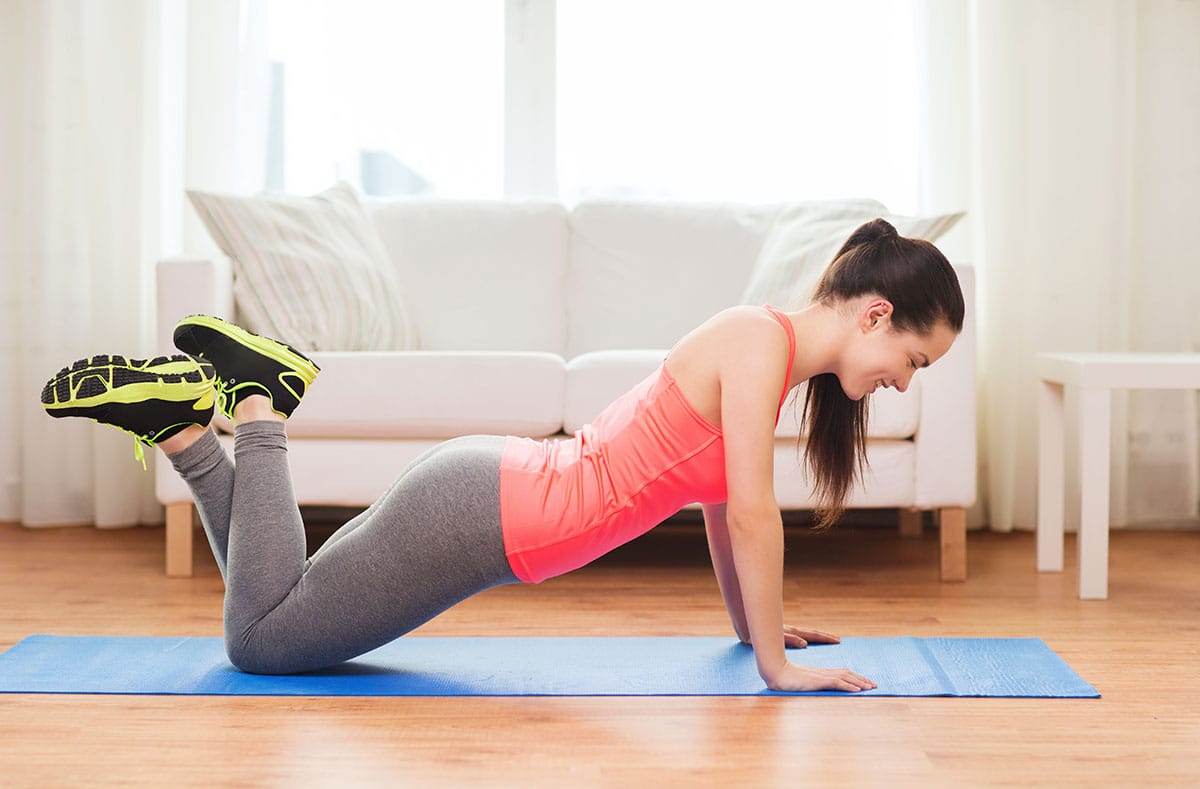Russian Push-Ups: Tips and Techniques
Introducing the Russian push-up: a dynamic exercise that combines strength, coordination, and a bit of flair.
Are you tired of the same old push-ups and looking for a fresh challenge in your workout routine? Then, Russian push-ups might be a great alternative for you.
This isn't just your typical push-up, it's a move that integrates the stability of a long lever plank with the power of a push-up, making it a versatile addition to your fitness arsenal.
In this article, we’ll explore what makes this exercise unique and how you can incorporate it into your routine. Read on!
What Exactly is a Russian Push-Up?
So, what sets the Russian push-up apart from the standard push-up? It’s way harder! Imagine transitioning smoothly from a push-up to a forearm plank and back. This fluid motion not only works your upper body but also engages your core, enhancing both strength and stability.
It's like the push-up's cooler, more sophisticated cousin, offering a fresh take on a classic move. The Russian push-up challenges your muscles in new ways, making it a must-try for anyone looking to diversify their workout.
While some folks with a particular love for fitness aim for the goal of completing 500 push-ups a day, incorporating variations like the Russian push-up can add variety and prevent burnout.
Why Should You Try the Russian Push-Up?
First and foremost, the Russian push-up is a powerhouse for your upper body while also improving your balance and coordination. Think of it as a two-for-one deal: strength and stability in one smooth move.
Plus, it’s a great way to impress your friends at the gym, or at least make them curious about what on earth you’re doing. This exercise is perfect for breaking through plateaus and adding a new level of challenge to your fitness routine.

Getting to Know Your Muscles
Before we jump into the how-to, let’s chat about the muscles you're going to work. The Russian push-up primarily targets the pectoral muscles (that's your chest), the deltoids (shoulders), and the triceps.
But wait, there's more! Because of the plank transition, your core gets in on the action too, helping you build those skinny abs into abs of steel. And don’t forget about the secondary muscles, your back, and legs also get a little love, making this a well-rounded compound exercise. Understanding which muscles are engaged can help you focus on form and maximize the benefits of each rep.
How to Perform the Russian Push-Up: Step-By-Step
Alright, let’s break it down. Here’s how you can master the Russian push-up:
- Start in a High Plank Position: Keep your hands shoulder-width apart, directly under your shoulders, with your body forming a straight line from head to heels. Engage that core!
- Lower into a Push-Up: Bend your elbows to lower your chest toward the floor. Keep your elbows tucked close to your body for maximum tricep engagement.
- Transition to a Forearm Plank: Instead of pushing back up, drop your forearms to the floor, one at a time, so you’re now in a forearm plank. Ensure your body remains in a straight line.
- Push Back Up to High Plank: Press your hands into the floor, one at a time, to return to the high plank position.
- Repeat: That’s one rep! Aim for 8-12 reps to start, focusing on form over speed.
Common Mistakes to Avoid
No one’s perfect, but here are a few common missteps to watch out for:
- Sagging Hips: Keep those hips in line with your shoulders. If they drop, you’re losing core engagement.
- Flared Elbows: Keep elbows close to your body to protect your shoulders and maximize tricep activation.
- Rushed Movements: Take it slow and steady. The transition is where the magic happens, so don’t rush through it.
Variations and Progressions
Feeling confident with the basic move? Here are some variations to keep things interesting:
- Knee Russian Push-Ups: Perfect for beginners. Perform the exercise on your knees to build strength.
- Elevated Russian Push-Ups: Place your feet on an elevated surface to increase the challenge.
- Clap Russian Push-Ups: Add a clap when you push back up from the forearm plank for an explosive twist.

Adding Russian Push-Ups to Your Workout Routine
Now that you’re a pro, let’s talk about integrating this exercise into your routine. You can add Russian push-ups to your upper body day or use them as part of a full-body circuit. Here’s a sample workout to get you started:
- Warm-Up: 5-10 minutes of light cardio and stretching.
- Circuit:
- Russian Push Ups: 3 sets of 8-12 reps
- Squats: 3 sets of 15 reps
- Bent-Over Rows: 3 sets of 12 reps
- Plank Holds: 3 sets of 30 seconds

Frequency and Reps
How often should you be doing these? Aim for 2-3 times a week, allowing for rest days in between. Start with 8-12 reps per set and gradually increase as you build strength and endurance.
Safety First: Tips and Precautions
Safety is key, folks. Always warm up before diving into any workout to prepare your muscles and joints. Listen to your body, if something feels off, take a break. And if you’re new to this exercise, consider consulting a fitness professional to ensure your form is on point.
FAQs
1. What is the main difference between a Russian push-up and a regular push-up?
The Russian push-up incorporates a transition from a traditional push-up into a forearm plank and then back to the starting position. This additional movement engages the core more intensely and improves coordination and stability, offering a more comprehensive workout than the standard push-up.
2. Can beginners perform Russian push-ups?
Yes, although it may not be the best idea. Beginners can start with modifications, such as performing the exercise on their knees to reduce the load on their upper body. As strength and confidence build, they can progress to the full version of the exercise. However, this is typically an advanced exercise, so, unless you’re a beginner who’s really determined to master the Russian push-ups, there are plenty of other easier exercises out there.
3. How can I ensure I'm doing the Russian push-up correctly?
Focus on maintaining a straight line from head to heels throughout the exercise. Engage your core to prevent sagging hips, and keep your elbows close to your body when lowering into the push-up. Practicing in front of a mirror or recording yourself can help you check your form.
4. How many Russian push-ups should I aim to do?
It depends on your fitness level. Beginners might start with 3 sets of 5-8 reps, while more advanced individuals can aim for 3 sets of 10-15 reps. The key is to focus on maintaining proper form rather than rushing through the reps.
5. What are the benefits of incorporating Russian push-ups into my routine?
Russian push-ups enhance upper body strength, core stability, and overall coordination. They provide a dynamic challenge that can help break through fitness plateaus and add variety to your workout routine.
6. Can Russian push-ups help with weight loss?
While Russian push-ups alone won't lead to significant weight loss, they can contribute to a calorie-burning workout routine. Combined with a balanced diet and other forms of exercise, they can support weight loss goals by building muscle, which in turn increases your resting metabolic rate.
7. Are there any risks associated with Russian push-ups?
As with any exercise, improper form can lead to injury. It's important to start with a proper warm-up, focus on form, and not push beyond your limits. If you have any pre-existing conditions or concerns, consulting a fitness professional or healthcare provider is advisable.
Conclusion: Embrace the Challenge
The Russian push-up is more than just a cool-looking move: it’s a complete exercise that challenges your strength, stability, and coordination. By incorporating it into your routine, you’re not just building muscle, you’re enhancing your overall fitness. So, what are you waiting for? Give it a try and see how it transforms your workout game.
Also, if you’re feeling extra curious and determined, you can learn what happens if you do
Ready to conquer those coveted v-lines? We’ve made it simple to work on customized fitness plans or to introduce a little friendly competition to your fitness community by sharing exercises with your friends. Get started for free through the Flex fitness app.
Related articles


Get fit with Flex
Build muscle & lose weight fast for free.
Available on iPhone + Apple Watch





